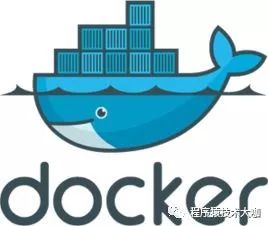可以将文章内容翻译成中文,广告屏蔽插件可能会导致该功能失效(如失效,请关闭广告屏蔽插件后再试):
问题:
Trying to build my project on the build server gives me the following error:
Microsoft (R) Build Engine Version 4.0.30319.1
error MSB4019: The imported project "C:\Program Files (x86)\MSBuild\Microsoft\VisualStudio\v10.0\TeamData\Microsoft.Data.Schema.SqlTasks.targets" was not found. Confirm that the path in the <Import> declaration is correct, and that the file exists on disk.
error MSB4019: The imported project "C:\Program Files (x86)\MSBuild\Microsoft\VisualStudio\v10.0\WebApplications\Microsoft.WebApplication.targets" was not found. Confirm that the path in the <Import> declaration is correct, and that the file exists on disk.
error MSB4019: The imported project "C:\Program Files (x86)\MSBuild\Microsoft\VisualStudio\v10.0\WebApplications\Microsoft.WebApplication.targets" was not found. Confirm that the path in the <Import> declaration is correct, and that the file exists on disk.
I solved this problem a few months ago, with installing Visual Studio 2010 on the Build Server. But now I'm setup a new server from scratch, and I want to know if there any better solution to solve this issue.
回答1:
To answer the title of the question (but not the question about the output you're getting):
Copying the following folder from your dev machine to your build server fixes this if it's just web applications
C:\Program Files (x86)\MSBuild\Microsoft\VisualStudio\v10.0\WebApplications
Remove x86 according to how your build breaks. If you have other project types you will probably need to copy the entire msbuild folder.
回答2:
Building and publishing WAPs is not supported if VS is not installed. With that said, if you really do not want to install VS then you will need to copy all the files under %ProgramFiles32%\MSBuild\Microsoft\.
You will need to install the Web Deploy Tool as well. I think that is it.
回答3:
UPD: as of VS2017, there is workload in Build Tools that eliminates this problem completely. See @SOReader answer.
If you'd prefer not to modify anything on build server, and you still want the project to build right out of source control, it might be a good idea to put the required binaries under source control. You'll need to modify the imports section in your project file to look like this:
<Import Project="$(SolutionDir)\BuildTargets\WebApplications\Microsoft.WebApplication.targets" />
<Import Condition="false" Project="$(MSBuildExtensionsPath32)\Microsoft\VisualStudio\v10.0\WebApplications\Microsoft.WebApplication.targets" />
The first line is the actual import from the new location that is relative to the solution directory. The second one is a turned-off version (Condition="false") of the original line that allows for Visual Studio to still consider your project to be a valid Web Application Project (that's the trick that VS 2010 SP1 does itself).
Don't forget to copy the C:\Program Files (x86)\Microsoft\VisualStudio\v10.0\WebApplications to BuildTargets folder under your source control.
回答4:
Right now, in 2017, you can install WebApplication redists with MSBuildTools. Just go to this page that will download MSBuild 2017 Tools and while installation click Web development build tools to get these targets installed as well:

This will lead to installing missing libraries in C:\Program Files (x86)\Microsoft Visual Studio\2017\BuildTools\MSBuild\Microsoft\VisualStudio\v15.0\WebApplications by default
回答5:
You can also use the NuGet package MSBuild.Microsoft.VisualStudio.Web.targets, referencing them within your Visual Studio project(s), then change your references as Andriy K suggests.
回答6:
Based on this post here you can simply download the Microsoft Visual Studio 2010 Shell (Integrated) Redistributable Package and the targets are installed.
This avoids the need to install Visual Studio on the build server.
I have just tried this out now, and can verify that it works:
Before:
error MSB4019: The imported project "C:\Program Files
(x86)\MSBuild\Microsoft\VisualStudio\v10.0\WebApplications\Microsoft.WebApplication.targets"
was not found. Confirm that the path in the declaration is
correct, and that the file exists on disk.
After the install:
[Builds correctly]
This is a far better solution than installing Visual Studio on a build server, obviously.
回答7:
The latest Windows SDK, as mentioned above, in addition to the "Microsoft Visual Studio 2010 Shell (Integrated) Redistributable Package" for Microsoft.WebApplication.targets and "Microsoft Visual Studio Team System 2008 Database Edition GDR R2" for Microsoft.Data.Schema.SqlTasks.targets should alleviate the need to install Visual Studio 2010. However, installing VS 2010 maybe actually be less overall to download and less work in the end.
回答8:
When building on the build/CI server, turn off the import of Microsoft.WebApplication.targets altogether by specifying /p:VSToolsPath=''. This will, essentially, make the condition of the following line false:
<Import Project="$(VSToolsPath)\WebApplications\Microsoft.WebApplication.targets" Condition="'$(VSToolsPath)' != ''" />
This is how it's done in TeamCity:

回答9:
Add dependency through NuGet & set a Build Parameter
Goal: no changes / installs necessary to the build agents
I have taken a hybrid approach to the NuGet approach by Lloyd here, which was based off of the committing binary dependencies solution by Andrik.
The reason why is I want to be able to add new build agents without having to pre-configure them with items such as this.
- On a machine with Visual Studio, Open the solution; ignore that the web project fails.
- In the NuGet package manager, add MSBuild.Microsoft.VisualStudio.Web.targets, as Lloyd mentioned.
- This will resolve the binaries to
[solution]\packages\MSBuild.Microsoft.VisualStudio.Web.targets.nn.n.n.n\tools\VSToolsPath\
- You can copy these to a references folder & commit,
- Or just use them where they are at. I chose this, but I'm going to have to deal with the version number in the path later.
In Version 7, I did the following. This may not have been necessary, and based on the comments is definitely not needed now. Please see the comments below.
- Next, in your TeamCity build configuration, add a build Paramenter for
env.VSToolsPath and set it to the VSToolsPath folder; I used ..\packages\MSBuild.Microsoft.VisualStudio.Web.targets.11.0.2.1\tools\VSToolsPath
回答10:
If you migrate Visual Studio 2012 to 2013, then open *.csproj project file with edior.
and check 'Project' tag's ToolsVersion element.
Change its value from 4.0 to 12.0
From
<?xml version="1.0" encoding="utf-8"?>
<Project ToolsVersion="4.0" ...
To
<?xml version="1.0" encoding="utf-8"?>
<Project ToolsVersion="12.0" ...
Or If you build with msbuild then just specify VisualStudioVersion property
msbuild /p:VisualStudioVersion=12.0
Solution Source
回答11:
It seems the new version of msbuild does not ship with Microsoft.WebApplication.targets. To fix you need to update your csproj file as so:
1) Edit the web app csproj (right click). Find the section in the csproj towards the bottom concerning build tools. It should look like so.
<PropertyGroup>
<VisualStudioVersion Condition="'$(VisualStudioVersion)' == ''">10.0</VisualStudioVersion>
</PropertyGroup>
<Import Project="$(MSBuildBinPath)\Microsoft.CSharp.targets" />
<Import Project="$(VSToolsPath)\WebApplications\Microsoft.WebApplication.targets" Condition="'$(VSToolsPath)' != ''" />
<Import Project="$(MSBuildExtensionsPath32)\Microsoft\VisualStudio\v10.0\WebApplications\Microsoft.WebApplication.targets" Condition="false" />
2) You need to add one VSToolsPath line below the VisualStudioVersion tag so it looks like so
<PropertyGroup>
<VisualStudioVersion Condition="'$(VisualStudioVersion)' == ''">10.0</VisualStudioVersion>
<!--Add the below line to fix the project loading in VS 2017 -->
<VSToolsPath Condition="'$(VSToolsPath)' == ''">$(MSBuildExtensionsPath32)\Microsoft\VisualStudio\v$(VisualStudioVersion)</VSToolsPath>
<!--End -->
</PropertyGroup>
<Import Project="$(MSBuildBinPath)\Microsoft.CSharp.targets" />
<Import Project="$(VSToolsPath)\WebApplications\Microsoft.WebApplication.targets" Condition="'$(VSToolsPath)' != ''" />
<Import Project="$(MSBuildExtensionsPath32)\Microsoft\VisualStudio\v10.0\WebApplications\Microsoft.WebApplication.targets" Condition="false" />
Reference link:
https://alastaircrabtree.com/cannot-open-vs-2015-web-project-in-vs-2017/
回答12:
This is all you need. Only 103MB. Don't install everything

回答13:
I have found this on MS connect:
Yes, you need to install Visual Studio
2010 on your build machine to build
database projects. Doing so does
not require an additional license of
Visual Studio.
So, this is the only option that I have for now.
回答14:
My solution is a mix of several answers here.
I checked the build server, and Windows7/NET4.0 SDK was already installed, so I did find the path:
C:\Program Files (x86)\MSBuild\Microsoft\VisualStudio\v9.0\WebApplications\Microsoft.WebApplication.targets`
However, on this line:
<Import Project="$(MSBuildExtensionsPath)\Microsoft\VisualStudio\v9.0\WebApplications\Microsoft.WebApplication.targets" />
$(MSBuildExtensionsPath) expands to C:\Program Files\MSBuild which does not have the path.
Therefore what I did was to create a symlink, using this command:
mklink /J "C:\Program Files\MSBuild\Microsoft\VisualStudio" "C:\Program Files (x86)\MSBuild\Microsoft\VisualStudio"
This way the $(MSBuildExtensionsPath) expands to a valid path, and no changes are needed in the app itself, only in the build server (perhaps one could create the symlink every build, to make sure this step is not lost and is "documented").
回答15:
I fixed this by adding
/p:VCTargetsPath="C:\Program Files\MSBuild\Microsoft.Cpp\v4.0\V120"
into
Build > Build a Visual Studio project or solution using MSBuild > Command Line Arguments
回答16:
I tried a bunch of solutions, but in the end this answer worked for me: https://stackoverflow.com/a/19826448/431522
It basically entails calling MSBuild from the MSBuild directory, instead of the Visual Studio directory.
I also added the MSBuild directory to my path, to make the scripts easier to code.
回答17:
Anyone coming here for Visual Studio 2017. I had the similar issue and couldn't compile the project after update to 15.6.1.
I had to install MSBulild tools but still the error was there.
I was able to fix the issue by copying the v14.0 folder from C:\Program Files (x86)\MSBuild\Microsoft\VisualStudio to the same folder as v15.0 and that resolved all the errors.
So now my folder structure looks like below, where both folders contain the same content.

回答18:
If you are using MSBuild, as in the case of a build server, what worked for me is:
Change the following:
<Import Project="$(MSBuildExtensionsPath)\Microsoft\VisualStudio\v9.0\WebApplications\Microsoft.WebApplication.targets" />
<Import Project="$(MSBuildExtensionsPath32)\Microsoft\VisualStudio\v9.0\WebApplications\Microsoft.WebApplication.targets" Condition="false" />
to:
<Import Project="$(MSBuildBinPath)\Microsoft.VisualBasic.targets" />
<Import Project="$(VSToolsPath)\WebApplications\Microsoft.WebApplication.targets" Condition="'$(VSToolsPath)' != ''" />
My Msbuild command is: *"C:\Program Files (x86)\MSBuild\14.0\Bin\MSBuild.exe" solution.sln /p:Configuration=Debug /p:Platform="Any CPU"*
Hope this helps someone.
回答19:
In case if you're trying to deploy a project using VSTS, then issue might be connected with checking "Hosted Windows Container" option instead of "Hosted VS2017"(or 18, etc.):

回答20:
- After installation of MSBuild tools from Microsoft, define the MSBuild path in the environment variable, so that it can be run from any path.
- Edit the .csproj file in any notepad editor such as notepad++, and comment the
- Check for the following elements,
-->
- Make sure you use import only once, choose whichever works.
- Make sure you have the following folder exists on the drive, "C:\Program Files (x86)\MSBuild\Microsoft\VisualStudio\v14.0" or whichever version is referenced by MSBuild target at "C:\Program Files (x86)\MSBuild\Microsoft\VisualStudio\v14.0\WebApplications\Microsoft.WebApplication.targets"
- From the command prompt, run the following command, to check
C:>msbuild "C:\\DotnetCi.sln" /p:Configuration=Release /p:UseWPP_CopyWebApplication=true /p:PipelineDependsOnBuild=false
- choose /p switch as appropriate, refer to enter link description here
enter image description here




